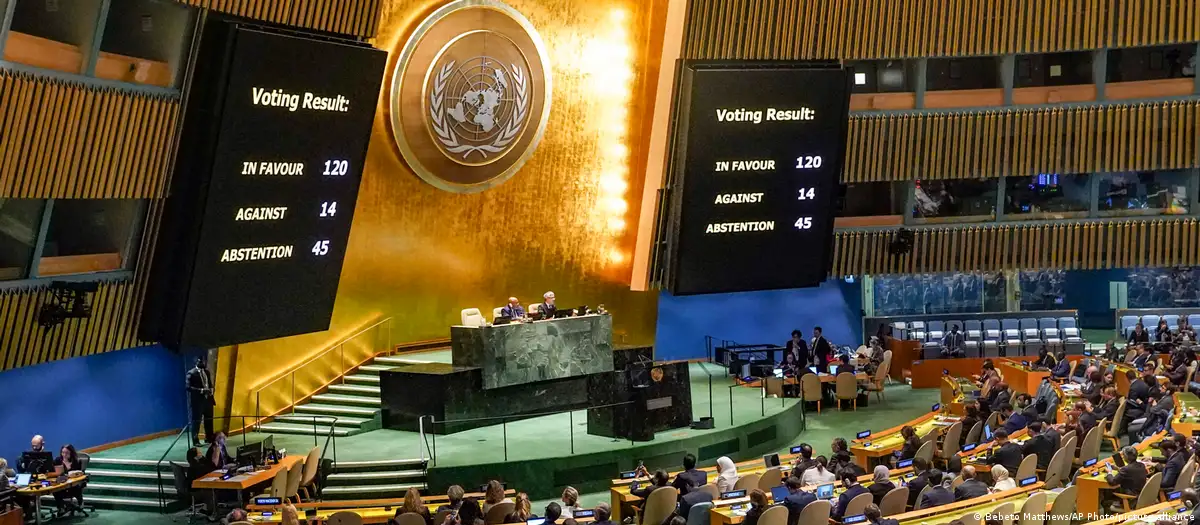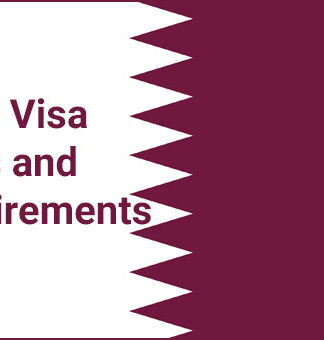POLITICSMIDDLE EAST
Cease-fire, truce, armistice: What’s the difference?
Clare Roth
22 hours ago22 hours ago
Three weeks into the Israel-Hamas conflict, the United Nations General Assembly has called for a “humanitarian truce.” How does this differ from other terms considered?
https://p.dw.com/p/4Y923
Voting results are displayed as the United Nations General Assembly voted on a nonbinding resolution calling for a humanitarian truce in Gaza.
Members of the UN General Assembly voted in favor of a nonbinding resolution calling for a truce in the Israel-Hamas conflictImage: Bebeto Matthews/AP Photo/picture alliance
The United Nations Security Council and General Assembly can suggest that different actions — like a truce, cease-fire or cessation of hostilities — be taken during a state of war.
Although many of these terms are often used interchangeably, each have different political implications and legal meanings.
Calls made by the UN General Assembly are ultimately merely suggestions to actors at war — unlike decisions made by the UN Security Council, they are not legally binding.
They are, however, considered powerful in their ability to reflect the general will of UN member states.
UN General Assembly calls for humanitarian truce in Gaza
02:14
Here’s an explanation of the differences between the various methods of action suggested by UN bodies during times of conflict.
Truce (suspension of hostilities)
A truce is not binding, it just indicates a halt in fighting. Truce agreements are made by belligerents themselves. A truce can take place in one specific geographic area of a broader conflict. These agreements can come and go over the course of a conflict and do not indicate the state of war is over.
The International Committee of the Red Cross (ICRC) uses the term “truce” interchangeably with the term “suspension of hostilities.”
According to the ICRC: “A truce should enable work to be done that is unrelated to the general conduct of war (e.g. removal of the wounded, burial of the dead, exchange of prisoners) or give military commanders time to ask for instructions regarding negotiations.”
Unlike a humanitarian pause, a truce can be called for any reason — it is not restricted to humanitarian purposes.
Cessation of hostilities
A call for a cessation of hostilities is considered more formal than a truce, but unlike a cease-fire, it is nonbinding. A cessation of hostilities means one or both sides have announced plans to suspend fighting. These can indicate the beginning of broader peace negotiations.
Humanitarian pause
According to the United Nations Office for the Coordination of Humanitarian Affairs (OCHA), a humanitarian pause is considered a “temporary cessation of hostilities purely for humanitarian purposes.”
These pauses are usually negotiated to take place for a defined period of time, sometimes only over a few hours, and in a specific geographic area where humanitarian activities are planned.
‘Humanitarian pause’ would allow aid to get into Gaza
26:06
Cease-fire
Unlike declarations of a cessation of hostilities or a truce, a cease-fire is generally meant to be binding. Like a cessation of hostilities or truce, it is only temporary in nature, but is generally expected to last for a longer period of time.
Cease-fires do not announce the end of a conflict, but they are meant to put the opposing parties in communication with one another about potential permanent settlements.
Unlike a truce, a humanitarian pause or a cessation of hostilities, the declaration of a cease-fire often applies to the entire geographical area of a conflict, according to the UN.
Armistice
An armistice indicates the formal end to a war negotiated by the involved parties, but isn’t a peace agreement.
Days of tranquility
Sometimes in a state of conflict, the United Nations Children’s Fund (UNICEF) and the World Health Organization (WHO) will call for parties to a conflict to agree to a “day of tranquility.”
These days are generally meant to give children uninterrupted access to health care on specific days.
Edited by: Ben Knight
Clare Roth Editor and reporter focusing on science and migration






























